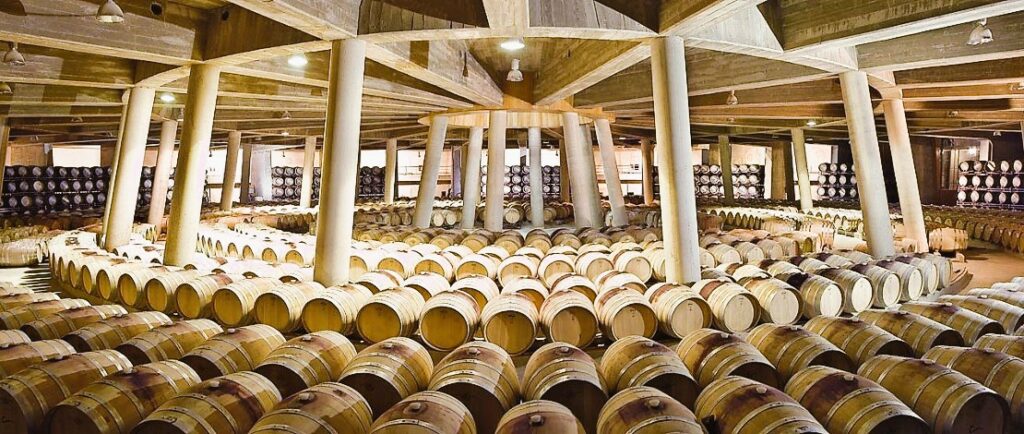SPAIN BLENDS OENOLOGY AND SPECTACULAR ARCHITECTURE THROUGH ITS 4,300 WINERIES
Spain is a major destination for wine tourism with its 4,300 wineries and close to one million vineyards. Touring wineries is also an opportunity to discover stunning contemporary structures created by some of the world’s most renowned architects.
Spain might just be a paradise for all those who love a good wine. The Spanish peninsula has some 969,000 hectares of vineyards – which is around 13% of all the land under vine in the world, and more than France or Italy.
With such a variety, Turespaña, Spain’s official tourism marketing agency, is getting more proactive for promoting oenology tourism. Its website is presenting a wide variety of vineyards that travellers can find and visit in Spain. Many of which are steeped in tradition.
But among the 4,300 wineries registered in Spain, some of the most interesting to discover are those blending stylish, contemporary and even edgy architecture. Many of these contemporary premises were designed by the world’s most prestigious architects, and are notable not only due to their aesthetic but also for their technological innovation and efficiency in wine production.
Visiting Spain’s avant-garde wineries is an original way to thematise an oenology theme discovery. Turespaña selected a few of them as examples of blending wine and contemporary architecture.
Marqués de Riscal: the City of Wine
Spain’s most spectacular winery stands in Elciego (Álava). Visitors are amazed by the sinuous forms of the building created by world-famed architect Frank Gehry. The architect chose titanium cladding in pink, gold and silver, the signature colours of Marqués de Riscal that emerge over the vineyards. A visit to the winery includes a luxury hotel, a wine therapy spa, a conference centre and two restaurants directed by the chef Francis Paniego.
Ysios, in honour of Isis and Osiris
On the outskirts of Laguardia (Álava) the striking silhouette of Bodegas Ysios stands out against the mountains of Cantabria in the distance. Founded in 2001, the winery is named after the Egyptian gods who taught humanity to cultivate grapevines. Another famed architect, Catalan Santiago Calatrava was inspired by a row of barrels to design the spectacular roof of this winery, which is shaped like a wine glass.

Viña Real, a unique barrel
Again in Laguardia, there is a building shaped like a giant barrel. Designed by Philippe Maziéres, this winery is built of concrete, cedar and stainless steel on the hill of Cerro de la Mesa, but the caves where the wine is stored were carved from the rock, making use of the unique terrain. Its wine tourism attractions also include workshops and creative activities for children, all centred on the world of wine.
Protos, first in La Ribera
Where Peñafiel castle (Valladolid) dominates the Ribera del Duero, another architectural icon is the winery with an intriguing roof designed by Richard Rogers. The modern facilities of Protos reinterpret the traditional architecture of the local wineries, with a structure and materials that improve performance, minimise energy use and reduce the environmental impact. The tour also includes the ancient wine cellars dug into the mountainside.
López de Heredia: Zaha Hadid’s decanter
The López de Heredia winery is the oldest in Haro and is one of the first three founded in Spain famed La Rioja. For its 125th anniversary, Zaha Hadid designed a sculptural roof for the winery’s Art Nouveau pavilion which stood at the Brussels International Expo of 1910. The project is an annex to the main building and houses tasting rooms and a shop.

Portia, a three-pointed star
The winery designed by Norman Foster for Grupo Faustino is located in Gumiel de Izán (Burgos), in the Ribera del Duero area. This huge star-shaped structure seems to emerge from the earth. Made of concrete, oak, steel and glass, each arm of the star is devoted to a different wine-making stage: fermentation, barrel ageing, and bottle ageing.
Baigorri, the glass box
Basque Iñaki Aspiazu designed this winery in Samaniego (Álava) which adapts to the terrain and uses it in the wine-making process. Most of the facilities are underground, enabling the use of gravity in the different stages of the vertical process. Outside, a large glass structure welcomes visitors, offering a spectacular view of the local vineyards before they begin the tour.
